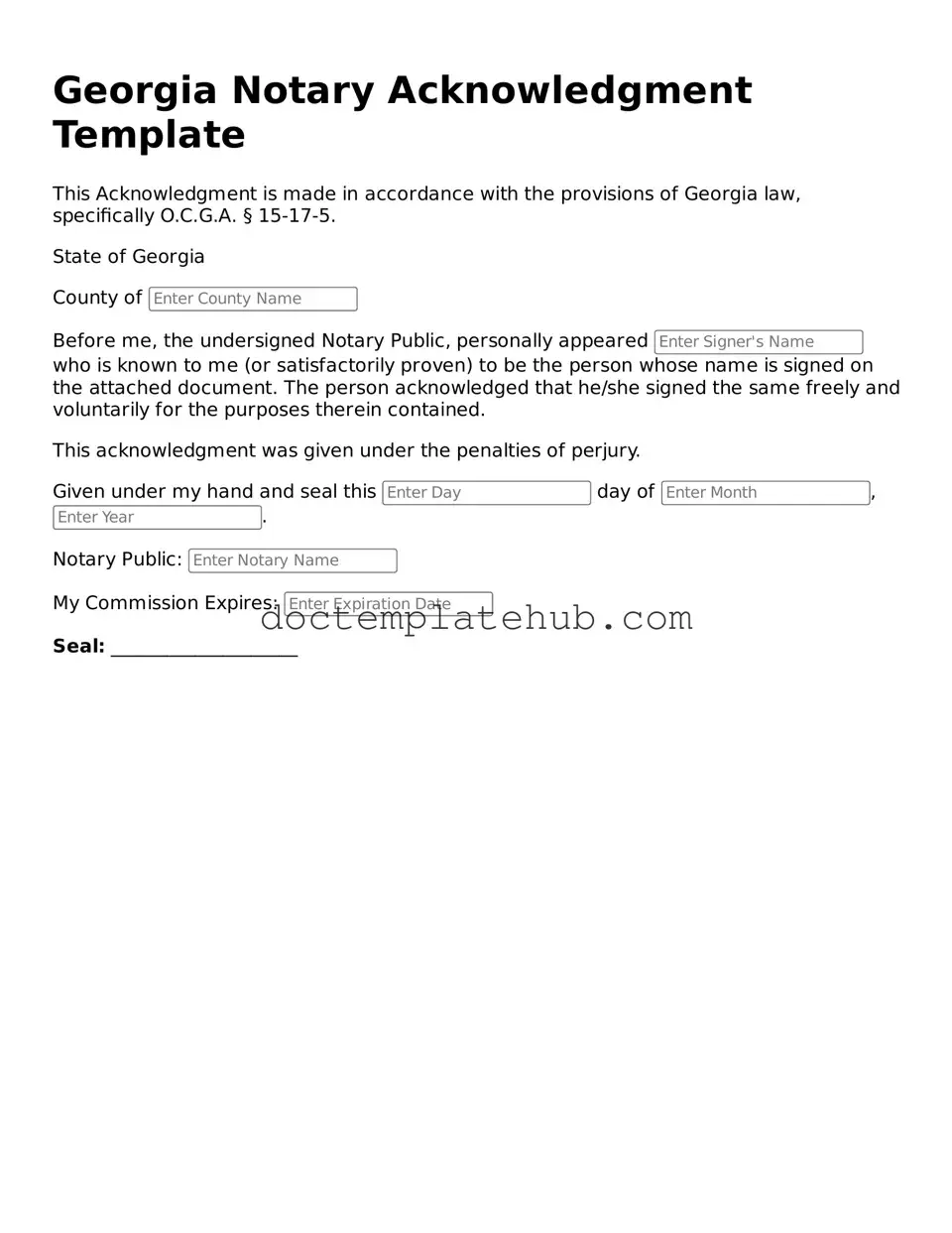What is a Georgia Notary Acknowledgment form?
The Georgia Notary Acknowledgment form is a document used to verify the identity of a signer and confirm that they willingly signed a specific document. This form is often required for legal documents, such as deeds, contracts, and affidavits, to ensure their validity in the eyes of the law.
Who can serve as a notary in Georgia?
In Georgia, a notary public must be at least 18 years old, a resident of Georgia, and able to read and write in English. They must also complete the application process and receive a commission from the state. Once commissioned, notaries can perform various duties, including witnessing signatures and administering oaths.
What information is required on the Notary Acknowledgment form?
The form typically includes the name of the person signing the document, the title of the document being signed, and the date of the acknowledgment. Additionally, the notary will provide their name, signature, and seal, confirming that they have verified the identity of the signer.
Is a Notary Acknowledgment form necessary for all documents?
Not all documents require a Notary Acknowledgment. However, many legal documents, especially those that will be filed with a government agency or used in court, do need this form to ensure their authenticity. It's always a good idea to check the specific requirements for the document in question.
How does one complete a Notary Acknowledgment form?
To complete a Notary Acknowledgment form, the signer must appear before the notary and present valid identification. The notary will then fill out the form, noting the date and details of the signing. After the signer has acknowledged their signature, the notary will sign and affix their seal to the document.
Can a Notary Acknowledgment be performed remotely in Georgia?
As of now, Georgia does not permit remote notarization. All notarial acts must be performed in person. This means that the signer and the notary must be physically present together during the acknowledgment process.
What should I do if I have a problem with my Notary Acknowledgment?
If you encounter issues with your Notary Acknowledgment, such as a missing signature or seal, it's important to address it promptly. You may need to contact the notary who performed the acknowledgment for corrections. If necessary, you can also seek legal advice to understand your options for resolving the issue.
